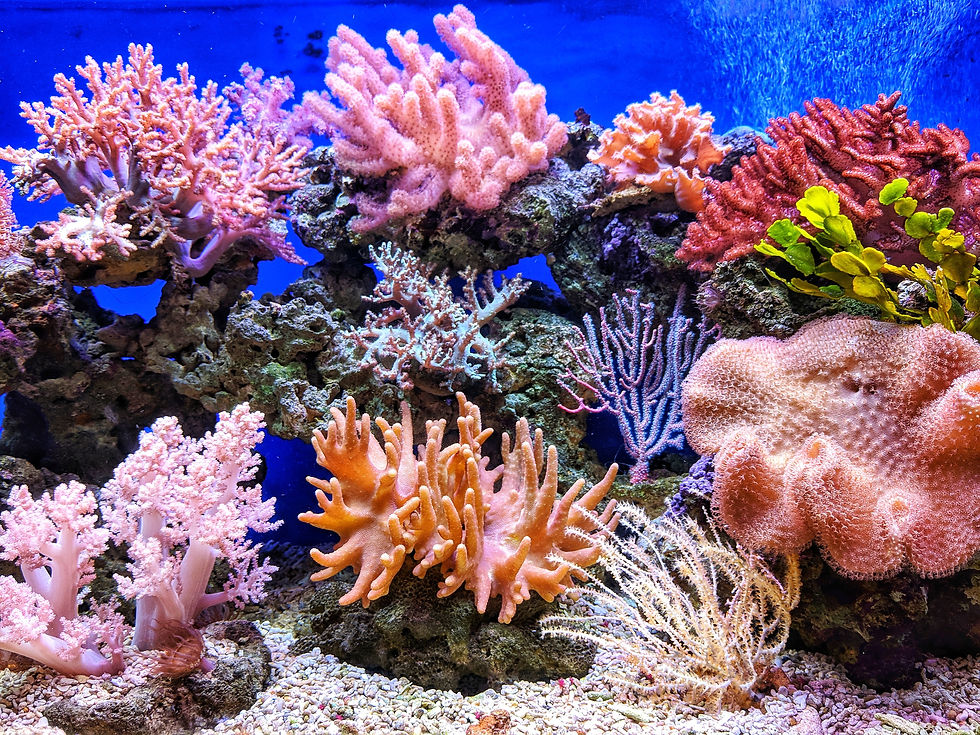Brands Helping to Keep Fashion Above Water
- Ben Wilkinson

- Jun 11, 2021
- 3 min read
Updated: Aug 16, 2021
It’s no secret that the fashion industry is detrimental to our oceans, especially since the explosion of fast fashion. The World Bank reported that “Every year, half a million tons of plastic microfibres are dumped into the ocean, the equivalent of 50 billion plastic bottles.
The danger? Microfibres cannot be extracted from the water and they can spread throughout the food chain.”
While there are always things consumers can do to help, like donating old clothing, buying second-hand and only purchasing what you need, it’s fashion brands that have the most work to do. We’re taking a look at some brands that are going the extra mile to produce quality clothing that helps protect our oceans.
adidas
In 2015, sportswear brand adidas announced its partnership with environmental body Parley for the Oceans. Their aim was to turn lifeless plastic waste from the ocean into high-tech sportswear, with adidas stating they partnered with Parley on a mission to use 100% recycled polyester in their products by 2024.
They began with the Ultraboost Uncaged Parley trainers, released in 2015. The shoes were crafted with yarn made entirely from ocean plastic waste, a big step forward for the sportswear company sustainability-wise.
adidas have been working with Parley ever since, now incorporating their ethic into hundreds of products and taking strides to change their global environmental footprint. In 2017, they even swapped all their plastic bags for paper ones, thus eliminating an estimated 70 million plastic shopping bags!
Their CEO Kasper Rorsted stated “We not only see sustainability as an opportunity to get a competitive advantage, we see it as an obligation for us as a global company to do business in a responsible and sustainable way.”
H&M
For many years, H&M have been at the forefront of high-street sustainability and made a pledge to be 100% sustainable by 2040, vowing to only use recycled resources and renewable sources in the production of their clothes.
They’ve turned their attention to the oceans on many occasions, like in 2019 when they launched their collaboration with sustainable manufacturer Aquafil ‘H&M Conscious Exclusive Collection’. This line featured garments made from textiles that are woven from regenerated nylon reclaimed from landfills and oceans, effectively diverting a waste stream while also avoiding creating another one.
Additionally, since 2013 H&M have allowed customers to drop off old, unwanted clothes and textiles in their stores as part of their ‘take-back’ program. Therefore, their stores were not just shopping destinations, but clothes recycling points too. This is an amazing way to be sustainable and still top-up your wardrobe! In 2019, H&M collected 29,005 tonnes of textiles for reuse and recycling through our garment collecting initiative — equivalent to about 145 million T-shirts.
Stella McCartney
It was inevitable that a brand like Stella McCartney would turn its attention to the oceans sooner or later, being that they’re built on an anti-cruelty, fur and leather-free ethos. Similarly to adidas, Stella McCartney teamed up with Parley for the Oceans in 2017, releasing a pair of 100% ocean plastic trainers and going on to announce a long-term partnership with them a few months later.
McCartney herself proclaimed “Fashion is an industry that makes a significant impact on the health of the planet, and on its life support system — the oceans. Our goal has always been to challenge ourselves and the industry to do better, to continually ask ourselves how we can improve. We want to be responsible and accountable for the items we make and the ways we make them. And we need to start somewhere in order to progress.”
The fashion giant also stunned at Paris Fashion Week in 2017, debuting their ‘skin-free skin’ range, a collection of looks produced using newly-developed fabrics, many of which were produced using recycled plastic bottles recovered from the ocean.
The collection was a hit, and included (incredibly real looking) leather jackets, dresses and jumpsuits that pose the genuine question – why do we need to use leather anymore when there are newly developed fabrics that look just as good?
So, with these brands and others all around the globe making an effort to reduce their carbon footprint, have a lesser environmental impact and still make fabulous clothing, there’s nothing stopping you from being the most sustainable shopper you can!



Comments